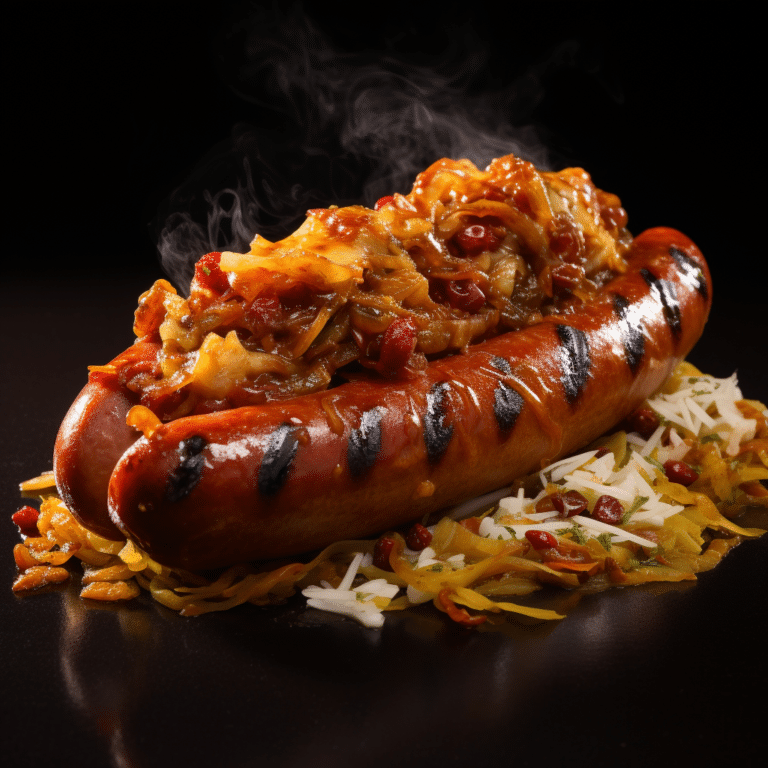Sopes vs. Huaraches: Exploring Mexican Antojitos Delights
Sopes vs Huaraches: Sopes and huaraches are antojitos found in Mexico, South America, and some parts of the US with a high population of Mexicans. Antojitos, translated as small cravings in English, are street snacks or appetizers. They are usually small and savory, mostly prepared by street vendors and market stalls in Mexico.
Sopes and huaraches are open-faced snacks made of fried flatbread with diverse toppings. Sopes are small and round, often topped with meat and vegetables. They resemble tostada or thick tortillas. Huaraches are sandal-shaped, often topped with black beans, meats, and vegetables. This article looks at the differences and similarities between sopes and huaraches.

Sopes Vs. Huaraches: Overview
The Sopes
Sopes trace their origin in Central and Southern Mexico. Also known as picadita or pellizcadas. They are small, round open-faced snacks made from fried flatbread topped with savory toppings.
The look like tortillas though thicker, and the sides are pinched. The soft, thick, and pliable base supports toppings and the pinched side prevents toppings from falling off. The flatbread is fried until done but not necessarily crunchy. Frying adds resistance to moisture from the toppings and thus protects the bread from getting soggy and messy.
Ingredients of Sopes
The dough of sopes is made of masa harina, water, oil, salt, and eggs if you want to add color. Traditionally they were topped with vegetables, meats like ground meat, chicken, chorizo and cheese. In Oaxaca, sopes are topped with roasted grasshoppers known as chapulines.
Variations Of Sopes
The most common variation of sopes is sope de pollo. They are sopes topped with chicken. There are others topped with beef though less common and larger than sope de pollo. Sopes found in Acapulco and Guerrero are much smaller and are referred to as sopecitos. They Sopes vs Huaraches are made of salsa and beans only. There are other variations found in the US and other parts of Mexico.
Serving
Sopes are tiny and are often used as snacks in between meals. They can be served as a main dish with accompaniments such as rice, corn, eggs, sausage, bacon, salads, and steamed vegetables. They go well as side dishes.
Try to complement your sopes with the accompaniment. For instance, when you plan to serve sopes with chicken, avoid using the same in the toppings. You could use beans or eggs for topping. Sopes are best eaten using hands; using a knife and fork on this tiny snack might be lots of work, but if you like it, try it out.
Huaraches
Huarache is a Spanish word meaning sandal, Sopes vs Huaraches hence the shape of the dish. It is an open snack, two or three times larger than a sope. It looks like an oblong piece of pizza. Its consumption has spread into the US. Huarache is sandal-shaped flatbread topped with savory toppings.
The dough is made of masa harina, a flour made from nixtamalized corn finely ground to make soft flour. The dough is fried and then topped with beans and other savory toppings such as cheese, chorizo, cilantro, and cactus paddles.
Ingredients
The main ingredients of huaraches are masa harina, salt, water, and oil. The traditional variation has black beans as the main topping with other additions. As the dish spreads, the ingredients keep on varying, depending on the staples in the community.
Serving
Huaraches are large and are served as main dishes. They are served along with vegetable salads, steamed veggies, soups, chicken, beef, and seafood. Huarache can also be sliced into smaller pieces to be eaten as snacks between meals or as a side dish. This dish is eaten with a knife and fork with a little mess here and there. However, due to its large size, it could get messier when using hands.
How To Prepare Sopes And Huaraches
You can buy flatbread for sopes and huaraches in stores. For homemade flatbread, mix masa harina with water, salt, and vegetable oil. For sopes, make small round-shaped bread and larger sandal-shaped dough for huaraches. Add pre-cooked meat, beans, seafood, and other additions that need cooking. Add the toppings to the flatbread and serve hot. Prepare the sopes and huaraches just before serving.
Storing Sopes And Huaraches
If you buy or prepare excess sopes and huaraches, you can refrigerate or freeze them. Put them in an airtight container or plastic bag, and refrigerate. You can leave them refrigerated for one week. You can also consider freezing them for long-term use. They could stay fresh in the freezer for one month.
To thaw frozen sopes and huaraches, put them in the refrigerator for 24 hours to allow them to unfreeze slowly. Heating them directly from the freezer makes them lose shape and flavor. Avoid storing these dishes at room temperatures; this can cause bacteria to grow and contaminate the food.
Signs Of Spoilt Sopes And Huaraches
When buying huaraches and sopes from stores, watch out to get those that are fit for consumption. You should also check your stored dishes to confirm if they are okay to be eaten. Spoilt sopes and huaraches might have molds, odor, changes in texture, and appearance. They could also be slimy and have an odd taste. If they have gone bad, discard them.

Similarities Between Sopes And Huaraches
- Both are made of masa harina
- Both are open-faced snacks with savory toppings.
- Sopes and huaraches are antojitos, small cravings.
- They both originated from Mexico and are also popular in South and Central America.
Summarized Comparison Between Sopes And Huaraches
| Description | Sopes | Huaraches |
| Size | small | large |
| Sides | pinched | Not pinched |
| Shape | Round | Sandal- like |
| Serving | Snack | Main dish |
| Eggs in dough | optional | no |
| Black beans | optional | yes |
In conclusion, sopes and huaraches are open-faced snacks made of masa harina and topped with savory toppings. They differ in shape, size, and serving. However, they are similar in many other ways.






